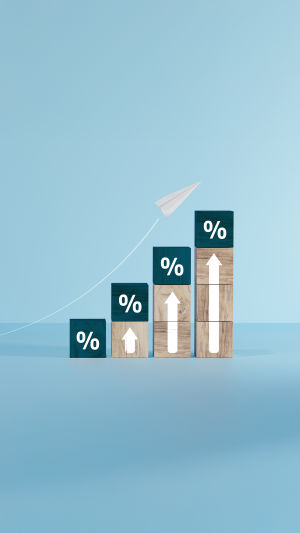Hey Lykkers! Let's play a quick game. I give you two friends to help grow your savings. One friend, "Simple Sam," is reliable but a bit, well, simple.
The other, "Compound Chloe," is a powerhouse who gets more energetic over time. Which one would you choose?
If you instinctively picked Chloe, you're on the right track! Understanding the difference between these two is the single most important lesson for building wealth. So, let's demystify the math and see how your money really grows.
<h3>Meet Simple Sam: The Straight-Shooter</h3>
Simple interest is, as the name implies, straightforward. It's calculated only on the initial amount of money you deposit, called the principal.
Think of it like this: you lend a friend $1,000 at a 5% simple interest rate per year. Every single year, they will pay you back $50 in interest. It's predictable and easy to calculate. After 10 years, you'll have earned $500 in interest, making your total $1,500.
It's a linear, steady growth. This is commonly used in some car loans, personal loans, and short-term bonds.
<h3>Now, Meet Compound Chloe: The Growth Machine</h3>
Compound interest is often called the "eighth wonder of the world," and for good reason. It's interest calculated not only on your initial principal but also on the interest that has already been earned.
Let's go back to that $1,000. But this time, at a 5% annual compound interest rate, compounded yearly.
In Year 1, you'd earn $50, just like with simple interest. But in Year 2, you'd earn 5% on $1,050 - that's $52.50. In Year 3, you'd earn 5% on $1,102.50. See what's happening? You're now earning interest on your previous interest! This creates a snowball effect. Your money doesn't just grow; it grows at an accelerating rate.
<h3>The Visual Gap: Watching the Difference Grow</h3>
Let's see what happens to our $1,000 over 20 years. With simple interest, your money would grow in a perfectly straight line, reaching exactly $2,000 after two decades. But with compound interest? That same $1,000 would blossom to over $2,650. The longer you wait, the wider that gap becomes.
After 30 years, simple interest gives you $2,500, while compound interest grows to nearly $4,322. That's the power of earning "interest on interest" at work!
<h3>The Expert's View</h3>
This incredible power of compounding isn't just a mathematical curiosity - it's the foundation of wealth building. As renowned investor Warren Buffett famously stated, "My wealth has come from a combination of living in America, some lucky genes, and compound interest."
He credits this fundamental financial principle as a key component of his success, highlighting how crucial it is for long-term investors to understand and harness this force.
<h3>Your Real-World Advantage: How to Make Chloe Work for You</h3>
So, how do you apply this? It's simple! When you're saving or investing, you always want compound interest on your side! This is the engine behind retirement accounts, index funds, and high-yield savings accounts. The key is to start early and be consistent. Time is compound interest's best friend.
When you're borrowing, you want to avoid compound interest at all costs! This is how credit card debt can spiral out of control so quickly. The interest compounds on your unpaid balance, making the debt grow faster than many people can pay it off.
<h3>The Final Takeaway</h3>
Think of it this way: Simple Interest is like being paid to push a wheelbarrow in a straight line. Compound Interest is like rolling a snowball down a snowy hill - it starts small but gathers more snow and momentum with every turn.
So, Lykkers, the next time you look at a savings or investment account, check if it's powered by Simple Sam or Compound Chloe. Your future, wealthier self will thank you for choosing the snowball. Now, go find that hill.





